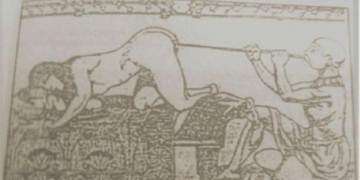Through attacks and massacres, the forces of Genghis Khan caused a massive decrease in carbon dioxide levels in the atmosphere, potentially leading to a cooler Earth.
Based on Antarctic ice cores, scientists from the Carnegie Institution in the U.S. identified a sharp decline in atmospheric carbon levels (approximately 3 ppm) between 1200 and 1470 (ppm stands for parts per million, measuring the density of a substance in a very small mass or volume). This period coincided with the Mongol invasions across Asia and the Black Death pandemic in Europe. A second decline of 4.6 ppm was also detected between 1560 and 1680, overlapping with the colonization of the Americas and the fall of the Ming dynasty in China, as reported by IFL Science on November 16. The research team published their findings in the journal The Holocene.

Genghis Khan led the Mongol invasions in Asia. (Image: Yusuf Sami Kamadan).
All four events caused countless deaths, leading researchers to wonder whether the sudden decline in global population contributed to changes in CO2 concentration. They believe that the decrease in population restricted deforestation, allowing more trees to grow and serving as carbon sinks.
To investigate, the research team reconstructed changes in global land use from 800 to the present, integrating published agricultural maps and population data. Among the four events mentioned, the Mongol invasion initiated by Genghis Khan in 1200 and lasting until 1380 had the most significant impact on the climate.
According to the researchers, the Mongol army killed about 30% of the 115 million people they encountered during their campaigns, leading to the regrowth of 142,000 km2 of forest. This unexpected increase in vegetation helped remove 684 million tons of carbon from the atmosphere, resulting in a global reduction of 0.183 ppm. In contrast, the Black Death only caused a reduction of 0.026 ppm in atmospheric carbon. Meanwhile, the colonization of the Americas and the fall of the Ming dynasty corresponded to reductions of 0.013 and 0.048 ppm, respectively.
However, none of the historical events mentioned can fully explain the climate changes observed in ancient ice cores. The research team notes that trees typically take decades to mature. The population would recover and continue deforestation long before new trees could influence carbon levels.
Additionally, while each event reduced the population in specific regions of the world, emissions from other parts of the planet could largely offset the carbon lost due to reduced deforestation. The researchers concluded that the Mongol invasion only temporarily halted the increase of CO2 emissions.





















































